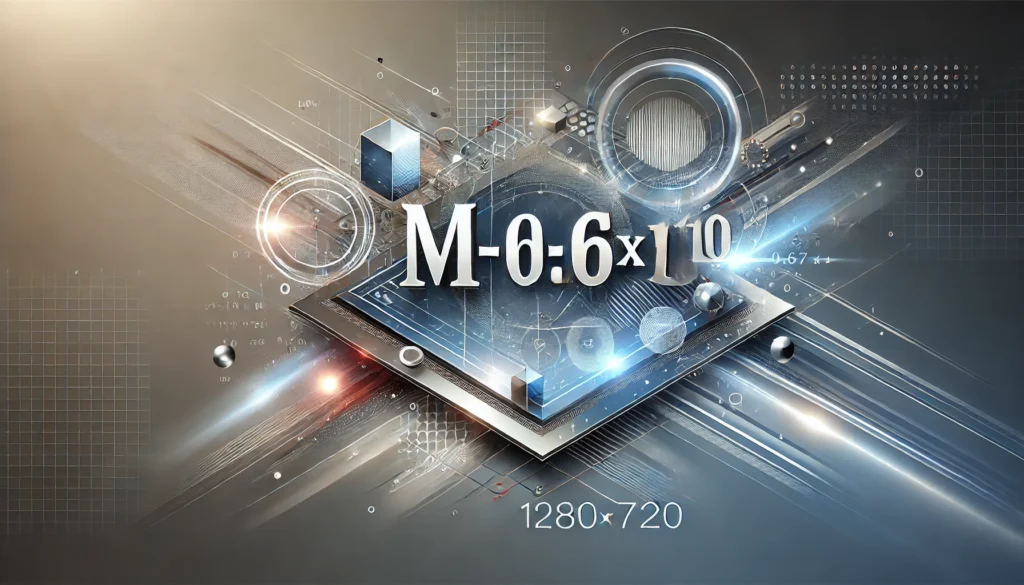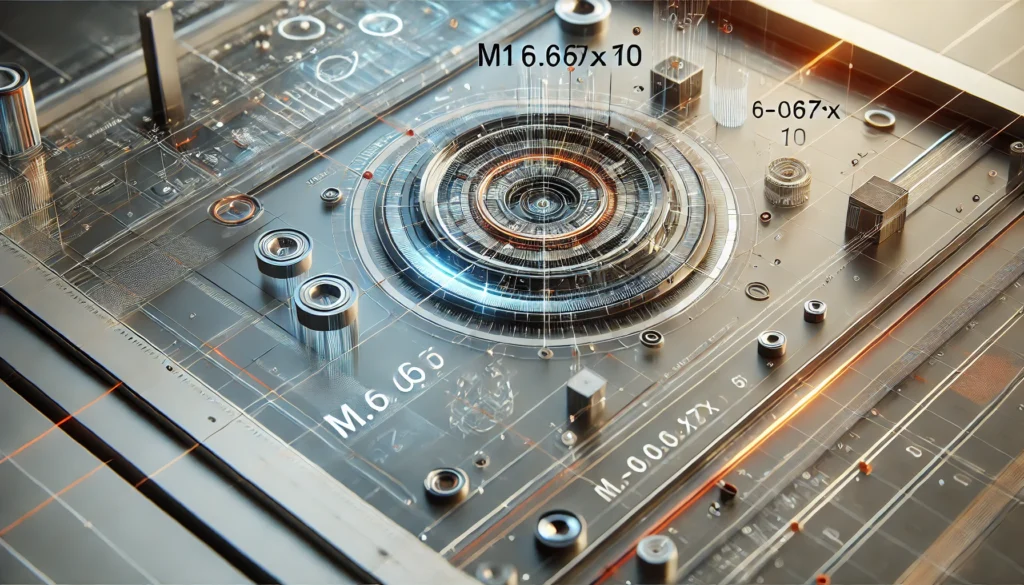Let’s face it—technical terms like M1.6-0.67×10 can feel like they belong in an engineering manual, not everyday conversation.
But what if I told you this little combination of letters and numbers could be the answer to a specific problem you didn’t even know you had?
Whether you’re a DIY enthusiast, a manufacturing pro, or just someone staring at this phrase on a shopping list, we’re going to unpack it all.
Let’s break it down and see how M1.6-0.67×10 fits into your life.
What Is M1.6-0.67×10 Anyway?
At first glance, this might look like a random string of text.
But it’s not.
M1.6-0.67×10 is a way of describing a type of screw.
Specifically:
- M1.6: The “M” refers to the metric system. “1.6” tells you the diameter of the screw in millimeters.
- 0.67: This is the thread pitch, or the distance between threads. Smaller numbers mean tighter threads.
- x10: The length of the screw in millimeters.
So, if you’re holding an M1.6-0.67×10, you’ve got a 1.6 mm wide, 10 mm long screw with 0.67 mm between each thread.
Simple, right?

Why Does M1.6-0.67×10 Matter?
If you’ve ever tried to fix something and used the wrong screw, you already know the frustration.
It might not fit, it could strip the hole, or worse—it could break entirely.
Here’s where M1.6-0.67×10 shines.
These screws are common in:
- Electronics: Perfect for securing tiny components in gadgets like smartphones or laptops.
- Watches: They’re the heroes of precision assembly.
- Model Building: Ideal for hobbyists creating miniature cars, planes, or even robots.
How Do You Choose the Right M1.6-0.67×10 Screw?
Not all screws are created equal.
Here’s how to make sure you’re grabbing the right one:
- Material Matters: Look for stainless steel if you want durability or titanium for lighter weight.
- Purpose is Key: Are you using it for electronics? You’ll want non-magnetic screws. Working on models? Aesthetic finishes might matter more.
- Thread Engagement: Make sure the threads fit snugly without forcing it. A loose screw isn’t doing its job.
FAQs About M1.6-0.67×10
Can I Replace It with a Different Screw?
It depends. If the diameter, pitch, and length are the same, you’re good to go.
But mismatched specs can cause serious issues, like damaging the device or making the connection weak.
Where Can I Buy M1.6-0.67×10 Screws?
Specialty hardware stores often carry them, and they’re widely available online.
Check trusted retailers like McMaster-Carr or Fastenal.
Why Is Thread Pitch Important?
Thread pitch affects how tightly the screw grips.
For example, finer threads (like 0.67) provide better precision and holding power but might take longer to install.

Tips for Working with M1.6-0.67×10 Screws
- Use the Right Tools: These screws are small. Precision screwdrivers are your best friend.
- Don’t Over-Tighten: It’s tempting, but too much force can strip threads or snap the screw.
- Store Them Safely: Ever dropped a tiny screw and spent an hour looking for it? Use a magnetic tray to keep them in one place.
Common Mistakes to Avoid
- Guessing the Size: Always double-check the diameter, pitch, and length. A close guess isn’t good enough.
- Ignoring Materials: Using a steel screw in a non-magnetic device can cause interference.
- Skipping Prep Work: Make sure the hole is clean and pre-drilled if needed. This ensures the screw threads correctly.
Why You Should Care About M1.6-0.67×10
These screws might seem small and insignificant, but they hold the world together—literally.
From the tiny screws in your phone to the ones keeping your smartwatch ticking, M1.6-0.67×10 proves that details matter.
So next time you see this odd little string of numbers and letters, you’ll know it’s not just technical jargon.
It’s the unsung hero of precision engineering.
Remember, even the smallest tools can make a big difference.
And yes, M1.6-0.67×10 could be the one solving your next big problem.



